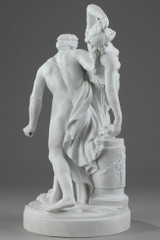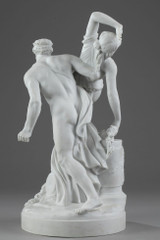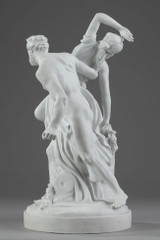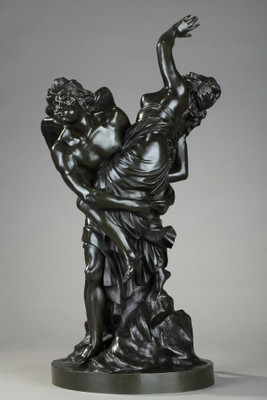A biscuit porcelain group after a model attributed to Louis-Simon Boizot, now in the Sèvres Museum. It depicts Proserpine, dressed in a flowing tunic, at the moment of her abduction by Pluto, the king of the Underworld. Proserpine's torso is arched backward, expressing her despair. Pluto is shown nude, wearing the hair and curly beard of the gods, as well as the crown, one of his attributes. The group rests on a circular base adorned with flowers. Signed in relief on the base: "E. Girardon." This is the mark of the Samson factory, which acquired the Sèvres molds in the 19th century. In very good condition, the harpoon in Pluto's hand is missing. This work was first exhibited at the Salon of 1786 by Louis-Simon Boizot. It is a variation on Girardon's sculpture, executed from 1678 onwards for the Grove of the Springs in the Gardens of the Palace of Versailles. Throughout his career, Boizot drew inspiration from the art of Versailles, for bronzes, biscuit porcelain, and more monumental works alike. This piece has a pendant, "The Abduction of Orithyia," based on the work by Marsy. The biscuit porcelain attributed to Boizot was produced at the molding and repair workshop in Sèvres, which, since the 18th century, had been responsible for manufacturing Sèvres Biscuit porcelain. This term designates Sèvres sculptures (in the round, bas-reliefs) intentionally left unglazed (that is, without glaze or decoration) since 1751-1752. 19th century, circa 1850. Dimensions: W: 20cm, D: 20cm, H: 45cm.
- Reference :
- 2053
- Availability :
- Sold
- Width :
- 20 (cm)
- Height :
- 45 (cm)
- Depth :
- 20 (cm)
- Identify Exists:
- False




















